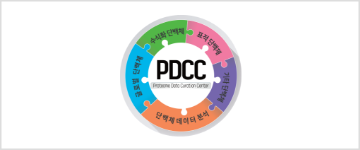2025 Fall
International Convention of PSK
2025 CONVENTION
Abstracts
Risk of Clostridium difficile infection associated with the potassium-competitive acid blockers: a multicenter retrospective cohort study using common data model
- Gyeongmin Lim1, Ju-Young Shin1,2,3, Da Eun Hyun4, Jie-Hyun Kim5, Yuna Kim5, Hyun-Soo Kim6, Rae Woong Park*3,7, Ju Hwan Kim*1,2
- 1Department of Biohealth Regulatory Science, Sungkyunkwan University
- 2School of Pharmacy, Sungkyunkwan University
- 3Department of Clinical Research Design & Evaluation, Samsung Advanced Institute for Health Sciences & Technology
- 4Department of Biomedical Sciences, Ajou University Graduate School of Medicine
- 5Department of Internal Medicine, Division of Gastroenterology, Gangnam Severance Hospital, Yonsei University College of Medicine
- 6Division of Gastroenterology, Department of Internal Medicine, Yonsei University Wonju College of Medicine
- 7Department of Biomedical Informatics, Ajou University School of Medicine
Proton pump inhibitors (PPIs) have been linked to an increased risk of Clostridium difficile infection (CDI) in observational studies. However, real-world evidence on the CDI risk of potassium-competitive acid blockers (P-CABs), a newer class of acid suppressants, is limited. Therefore, we conducted a retrospective cohort study using electronic health record data from 15 South Korean hospitals standardized to the Observational Medical Outcomes Partnership (OMOP) Common Data Model (CDM) to assess CDI risk with P-CABs versus other acid-suppressive agents. Patients newly prescribed P-CABs, PPIs, or Histamine 2 Receptor Antagonists (H2RAs) between 2019 and 2024 were included, and the primary outcome was CDI occurrence. After 1:4 propensity score matching, pairwise comparisons were performed using Cox proportional hazards models, and hazard ratios (HRs) with 95% confidence intervals (CIs) were pooled across databases via meta-analysis. In the matched cohorts, pooled HRs were 0.87 (95% CI, 0.69–1.10) for P-CABs vs PPIs, 0.85 (0.64–1.12) for P-CABs vs H2RAs, and 1.13 (0.98–1.29) for PPIs vs H2RAs. Sensitivity analyses suggested a reduced CDI risk with P-CABs compared to PPIs under specific conditions, including in patients treated for ≥7 days (HR 0.75; 95% CI, 0.57–0.97), ≥14 days (0.73; 0.55–0.97), and in the as-treated approach (0.59; 0.31–0.91). In conclusion, in this multicenter study, P-CABs were not associated with increased CDI risk compared to PPIs or H2RAs.
Q&A
- There are no registered questions









































